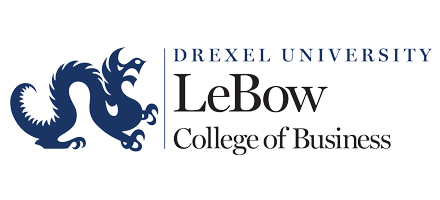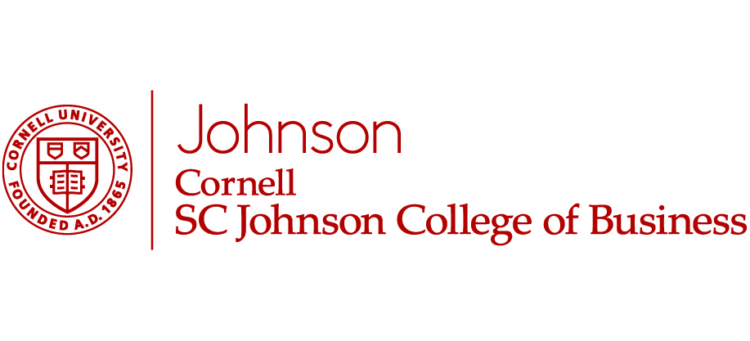One of the world’s most expensive Executive MBA program–Wharton’s $167,250 alternating weekend program for execs in Philadelphia–was ranked first by The Wall Street Journal today, dislodging Northwestern University’s Kellogg School’s pricey $153,900 EMBA which fell to fifth place. In its second ranking of the best EMBA programs, the Journal dinged Kellogg, rating the overall quality of its Executive MBA programs in the bottom third of the 56 schools the newspaper surveyed. The upshot: Kellogg’s EMBA offerings are now lower in rank than Wharton, Washington University in St. Louis, Thunderbird, and the University of Southern California.
Kellogg scored extremely well on one part of the methodology–its survey of company human resource and executive development officials. But it did less well on the Journal’s survey of recent graduates. The problem: Student satisfaction was inconsistent across the school’s seven programs, suggesting that Kellogg has stretched itself in EMBA offerings to a level that allowed quality to suffer. Kellogg has joint EMBA programs with Hong Kong’s University of Science and Technology in Hong Kong, WHU-Otto Beisheim School of Management in Germany, Kellogg-Recanti at Tel Aviv University in Israel, and the Schulich School of Business at York University in Toronto, Canada. Earlier this year, however,BusinessWeek still ranked Kellogg as the number one EMBA program, with Wharton in third place.
The school that has one of the largest EMBA programs didn’t fare as well as one might expect: Columbia Business School, which has 650 currently enrolled EMBA students in several programs, including joint ventures with London Business School and Berkeley’s Haas School, was ranked number nine, behind its local rival New York University, which took seventh place. Another big loser is Duke University’s Fuqua School of Business, a major player in the EMBA business, which failed to rank in the top 25 although the Journal placed Duke tenth two years earlier. BusinessWeek currently ranks Duke in 11th place, while U.S. News puts the school fourth in EMBA programs.
WHY EMBA RANKINGS MAY HAVE MORE CLOUT.
The Journal’s ranking is likely to be far more consequential for the business schools because EMBA programs are highly profitable and because many of the elite schools, such as Harvard, Stanford, Dartmouth, and Yale, do not offer such programs. Wharton’s annual revenues from its two EMBA programs in Philadelphia and San Francisco alone exceed $70 million a year. Rankings tend to sway even more EMBA applicants because public perception of the quality of these programs is less formed than it is for traditional two-year MBA programs.
The Journal based its ranking on three components: how a school scored in a survey of recent EMBA graduates; how it fared in a survey of companies familiar with EMBA programs; and how well it trained students in management and leadership skills identified in the two surveys of graduates and companies. Some 3,060 graudates of 87 EMBA programs at 64 business schools with campuses in 18 countries responded to the MBA survey while 189 corporate human resources and executive development managers responded to the company survey.
Many of those corporate officials were somewhat critical of the programs that they largely subsidize (although the schools now say that 36% of EMBA students now pay the full cost of the degree). The Journal reported, for example, that many corporate respondents say “it’s hard for them to judge the return on investment of an EMBA degree. More than a quarter of surveyed employers say they see the experience as a disruption, albeit a necessary one to develop top-notch managers; one in five sees allowing managers to go as simply a perk. And some criticize EMBA programs for not focusing enough on hard-core business disciplines.”
The Journal doesn’t survey every business school with an EMBA program. To be included, a school must have accreditation by the key trade groups in either the U.S. or Europe, have a minimum of four previous graduating classes, and a program’s students must have an average of at least nine years’ work experience with at least some students traveling more than 45 miles to reach class.
WHARTON JUST ENTERED 212 EMBA STUDENTS WITH AVERAGE 10 YEARS OF WORK EXPERIENCE.
Wharton, which has the most expensive MBA degree in the world with its EMBA offering, came out on top, the Journal reported, because the school had “high satisfaction ratings from students and companies, and top scores for the quality of its curriculum and faculty.” Tuition and fees for Wharton’s traditional two-year MBA program are $54,009 a year, without room and board. The least expensive of the Journal’s top 25 EMBA programs was at IE Business School which charges $73,000 and the University of Texas at Austin which charges $75,000. Wharton’s two-year, weekend residential program is offered in Philadelphia and San Francisco, and attracts students from throughout the U.S. and around the world. The 2010 entering class of 212 students has an average GMAT score of 700, 10 years of work experience each, and an average age of 34. Some 37% of Wharton’s 2010 entering class of EMBA students are international.
New York’s Stern School jumped seven places in the survey to seventh, UCLA’s Anderson School rose six spots to number 11th, Ohio State moved up four places to 17th, and the University of Texas’ McCombs School of Business rose three spots to 12th. The Journal reported that based purely on ratings for skills, the top program belonged to Thunderbird School of Global Management. “Graduates gave it high marks for instruction in strategic thinking, general leadership and the ability to work across multiple functional areas,” the newspaper reported.
Ultimately, though, the biggest winners were the eight schools out of the top 25 whose programs failed to make the Journal’s first EMBA ranking two years ago. They are number-two ranked Olin in St. Louis, 6th ranked University of Notre Dame, 13th ranked Arizona State University, 4th ranked University of Illinois, 18th place Cornell University’s program with Queen’s University, 19th ranked Rice University, 20th ranked Boston University, IE Business School in Spain which placed at 24th on the Journal ranking. Conversely, the biggest losers are the schools that completely fell off the Journal’s top 25 list. Duke University, which was ranked 10th in 2008, disappeared, along with 11th ranked Emory, 16th ranked Southern Methodist University, 18th ranked ESADE, 22nd ranked Purdue, 23rd ranked IPADE, 24th ranked IESE, 25th ranked University of Western Ontario, and Fordham University, which was ranked 26th in 2008 because the results were too close to name just 25 schools.
BIGGEST LOSERS IN THE WALL STREET JOURNAL EMBA RANKING
| Rank & School | Difference in Ranking | 2010 Rank | 2008 Rank |
| Berkeley (Haas) | -11 | 23 | 12 |
| Michigan (Ross) | -9 | 15 | 6 |
| Chicago (Booth) | -7 | 16 | 9 |
| North Carolina (Kenan-Flagler) | -5 | 10 | 5 |
| Northwestern (Kellogg) | -4 | 5 | 1 |
.
BIGGEST WINNERS IN THE WALL STREET JOURNAL EMBA RANKING.
| Rank & School | Difference in Ranking | 2010 Rank | 2008 Rank |
| New York (Stern) | +7 | 7 | 14 |
| Los Angeles (Anderson) | +6 | 11 | 17 |
| Ohio State (Fisher) | +4 | 17 | 21 |
| Texas-Austin (McCombs) | +3 | 12 | 15 |
.
The Wall Street Journal ranking of EMBA programs significantly differs from the list compiled by BusinessWeek, largely as a result of metholodogy and reach. BusinessWeek’s ranking of the top 25 EMBA programs is far more international, with seven of its top 25 schools outside the U.S. The Journal lists only one non-U.S. school on its EMBA list: IE Business School in Spain. BusinessWeek’s ranking is also based on two surveys–one of EMBA grads who are asked questions on teaching quality, career services, curriculum and other aspects of their MBA experience, and another survey of EMBA directors, instead of corporate executives who are surveyed by the Wall Street Journal. The director of each of the programs participating in the ranking is asked for his or her list of the top 10 programs. Then, there is The Financial Times more global EMBA ranking which has Kellogg’s joint program with Hong Kong UST in first place. The FT bases its ranking on a survey of alumni three years out of a program along with a survey filled out by business schools that includes a range of information from the percentage of female faculty to the percentage of international students in the program. U.S. News does a very limited ranking of EMBA programs based on the opinions of deans and MBA directors, ranking just ten schools.
HOW THE JOURNAL RANKING COMPARES.
| WSJ 2010 Rank & School | BW Rank | FT Rank* | U.S. News Rank | WSJ 2008 Rank |
| 1. Pennsylvania (Wharton) | 3 | 5 | 1 | 2 |
| 2. Washington Univ. (Olin) | ST | 12 | NR | NR |
| 3. Thunderbird (Arizona) | ST | 45 | NR | 3 |
| 4. Southern California (Marshall) | 5 | NR | NR | 4 |
| 5. Northwestern (Kellogg) | 1 | 17 | 2 | 1 |
| 6. Notre Dame (Mendoza) | 20 | NR | NR | NR |
| 7. New York (Stern) | 14 | 15 | 6 | 14 |
| 8. Cornell (Johnson) | ST | NR | NR | 7 |
| 9. Columbia Business School | 4 | 9 | 5 | 8 |
| 10. UNC (Kenan-Flagler) | 11 | NR | 10 | 5 |
| 11. UCLA (Anderson) | 8 | 28 | 9 | 17 |
| 12. Texas-Austin (McCombs) | ST | 55 | NR | 15 |
| 13. Arizona State (Carey) | NR | 43 | NR | NR |
| 14. Illinois-Urbana-Champaign | NR | NR | NR | NR |
| 15. Michigan (Ross) | 7 | 20 | 8 | 6 |
| 16. Chicago (Booth) | 2 | 4 | 3 | 9 |
| 17. Ohio State (Fisher) | 15 | 69 | NR | 21 |
| 18. Cornell/Queen’s Universities | 25 | NR | NR | NR |
| 19. Rice (Jones) | ST | 39 | NR | NR |
| 20. Boston University | 23 | NR | NR | NR |
| 21. Rutgers University | NR | 46 | NR | 20 |
| 22. Maryland (Smith) | NR | 50 | NR | NR |
| 23. Berkeley (Haas) | NR | 13 | 7 | 12 |
| 24. IE Business School (Spain) | 7 | 7 | NR | NR |
| 25. Vanderbilt (Owen) | NR | NR | NR | 19 |
.
.
ST: The school’s program was named in the “second tier” by BusinessWeek in its latest 2010 ranking of Executive MBA programs.
NR: The schools program was not ranked.
* The Financial Times EMBA ranking was published in 2009. The 2010 survey is expected to be released in October.




